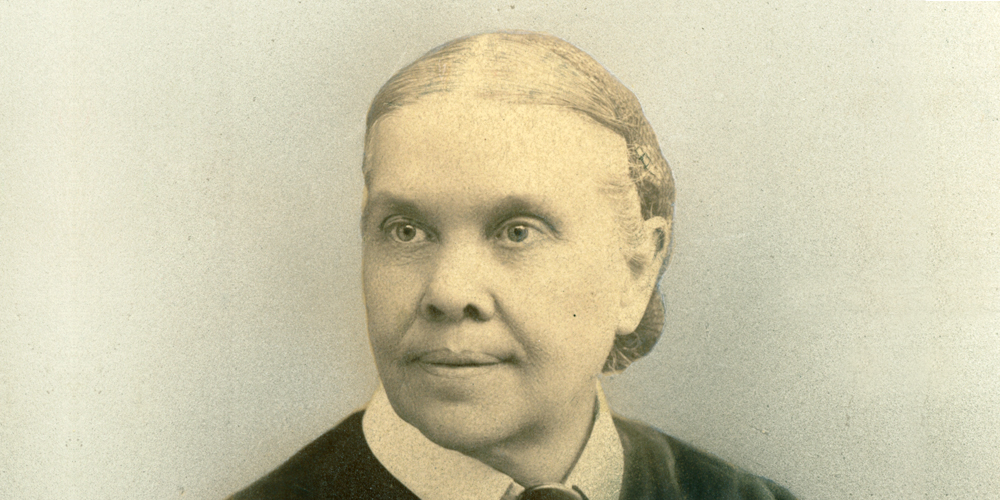Understanding and relating to the gift of prophecy

Ellen White died 105 years ago, on July 16, 1915. We take a look back at how her life and ministry affected the Adventist Church and its members. Here is one reflection.—Editors
Jesus promised that His church would have the gift of prophecy (Rev. 12:17; 19:10). Seventh-day Adventists believe that Ellen White (1827-1915) had the gift of prophecy.1 There is danger in rejecting the gift; there is also danger in idolizing the one who received the gift, rather than worshipping the One who gave the gift.
Three of my great-grandfathers knew Ellen White personally, and each one related to her in a different way.
The Gift Ignored
Frank B. Moran (my mother’s paternal grandfather) was born in Iowa in 1866. While studying medicine at the University of Michigan he received treatments at Battle Creek Sanitarium and accepted the Adventist message. At the Sanitarium, he met Adelaide Adams. A Seventh-day Adventist evangelist had come to her Iowa town in 1882, hired her at age 15 to be his pianist, and by the end of the meetings she had accepted the Adventist message.
A decade later, Adelaide’s interest in the Adventist health message took her to Battle Creek, Michigan, where she and Frank met and were married in 1894. The young couple were soon in demand among Adventist church leaders looking for talented medical leaders. W. C. White, Ellen White’s son, wrote Dr. Moran in March 1897, “There is an excellent opening [for Adventist medical work] in several of the [Australian] Colonies. . . . The main question is, Has the Lord called you to go to some of these needy mission fields?”2
By 1901, Dr. Moran was invited to establish a sanitarium in Los Angeles. There were differences of opinion on how to proceed.3 After counsel not to locate in Long Beach or Anaheim, work was begun in downtown Los Angeles.
By March 1902, Dr. Moran wrote glowingly to one of the board members: “The [vegetarian] restaurant, city treatment rooms, etc. have already outgrown our space in the building which we now occupy.” He had arranged for the purchase of a three-story building in downtown Los Angeles. He wanted to open a vegetarian restaurant on the first floor, have his office and treatment rooms on the second floor, and guest rooms on the third floor. He didn’t have adequate funding, but he expected church leaders to “sign some very large notes in the near future.”4
Ellen White and church leaders expressed serious concerns about putting a sanitarium on the edge of a rapidly growing city, as well as going into financial partnerships with those who were not fully committed to the Adventist message and mission. She wrote: “In attempting to advance the interests of the sanitarium in Los Angeles, Dr. Moran has recently made unwise movements. He has moved in accordance with his own judgment and the judgment of his immediate friends.”5
In spite of that counsel, Moran pressed ahead with his plans. As money grew tight, he justified opening his restaurant on Sabbath. Ellen White counseled him on both his financial presumption and on his Sabbath rationalization. He was angry that a woman would try to tell him, a doctor and businessman, what to do. When the venture failed, Moran blamed Ellen White and Adventist Church leaders. He left Los Angeles bitter and discouraged, settling in Dallas, Texas, with his wife and their infant son.
Over the next 20 years he became harder to live with. So Adelaide, still deeply committed, found refuge as dean of women at what is now Southwestern Adventist University.
Still practicing medicine at the age of 80, Frank bought a 55-acre farm and walked a mile each way to catch the bus to and from his medical practice. Till the end, pride kept him from admitting he might have been wrong.
His son, Frank A. Moran, accepted the counsel that his father had rejected, and was associated with Adventist medical work in California and Texas throughout much of his pastoral ministry.6
The Gift Embellished
Benjamin House (my mother’s maternal grandfather) had a difficult childhood. His mother had become pregnant with him while her husband was away on an extended trip. When her husband returned, he kicked his pregnant wife out of the house.
Benjamin did well in school, studied for the ministry, and later served as chair of the religion department and senior pastor of the college church at what is today Southwestern Adventist University, then at Pacific Union College in California, and finally at Union College in Lincoln, Nebraska.
He was a widely respected Bible scholar and participated in the 1919 Bible Conference, at which, among other theological issues, church leaders grappled with how to relate to the writings of Ellen White after her death four years earlier. Some at the conference said that Ellen White, like the Bible writers, had plenary, or thought inspiration; that the Holy Spirit inspired writers, but writers used their own words to express what they heard and saw.7
Others, including House, countered that Ellen White, like the Bible writers, was verbally inspired, that the Holy Spirit often, if not always, dictated the words they wrote.
The verbal inspiration group prevailed at the Bible conference. A few years, later Benjamin House wrote a textbook for college Bible classes that promoted their viewpoint.8 Unfortunately, he saw a prophet as someone to revere rather than as a human being used by God to communicate His messages in her own words.
Years later, while serving at Union College, House was asked by church leaders about a relationship that might be developing between him and one of his female students. During the meeting he lost his temper and said, “If you don’t have any more faith in me than that, I’m done,” and stormed out. Pride wouldn’t allow him to try to make things right.
Near the end of his life he returned to the Lord, reconnected with the Adventist Church, and was re-baptized.
The Gift Appreciated
Harry Shafer (my father’s maternal grandfather) and his family lived in Wichita, Kansas, where he served as first elder of the Adventist congregation. A topic of discussion in the early 1900s was whether there was any special significance to the fact that Adventist membership worldwide was approaching 144,000.
When Ellen White stopped by the Wichita congregation on her last trip across the country, Shafer asked for her counsel. She said, “Brother Shafer, on this topic, at this time, silence is golden.”
He accepted that, respected her, and continued to encourage the congregation to do their part in taking the gospel to the world.
How we relate to the counsel and encouragement given in the writings of Ellen White can make a difference in the course of our lives. “Have faith in the Lord your God and you will be upheld; have faith in his prophets and you will be successful” (2 Chron. 20:20, NIV).9
1 www.adventist.org/en/beliefs/church/the-gift-of-prophecy/.
2 Unpublished letter LB-0llA -26, W. C. White to F. B. Moran, 1897-03-25. This and other unpublished letters provided by the Ellen G. White Research Center at Southwestern Adventist University.
3 Arthur L. White, Ellen G. White: The Early Elmshaven Years: 1900-1905, vol. 5, p. 125.
4 Unpublished letter IN-032-039, F. B. Moran to E. E. Parlin, 1902-03-10.
5 Manuscript Releases, vol. 17, p. 357 (MR No. 1299, “Locating Sanitariums Away From the Cities; Health-Care Workers to be Deeply Spiritual,” pp. 348-361).
6 Frank A. Moran talked frequently with his boyhood friend Herbert T. Huguley about the need of Seventh-day Adventist medical work in Texas. At his death, Huguley left his estate for the purpose of establishing what became known as Texas Health Huguley Medical Center in Ft. Worth, Texas (see www.texashealthhuguley.org/about-us/history-of-texas-health-huguley-hospital). Moran later sold the family farm and gave most of the proceeds to establish the nursing program for what is now Southwestern Adventist University (see Southwestern Union Record/Review June 15, 1978, p. 12. www.adventistarchives.org/docs/SUR/SUR1978061S-V77-12 C.pdf#view=fit p. 12D). Moran served as a chaplain and taught Bible to medical, dental, and nursing students at what is now Loma Linda University Medical Center.
7 This was Ellen White’s position. She wrote: “The Bible points to God as its author; yet it was written by human hands; and in the varied style of its different books it presents the characteristics of the several writers. The truths revealed are all ‘given by inspiration of God’ (2 Timothy 3:16); yet they are expressed in the words of men. The Infinite One by His Holy Spirit has shed light into the minds and hearts of His servants. He has given dreams and visions, symbols and figures; and those to whom the truth was thus revealed have themselves embodied the thought in human language” (The Great Controversy, p. v).
8 Alberto R. Trimm, “A History of Seventh-day Adventist Views on Biblical and Prophetic Inspiration (1844-2000),” Journal of the Adventist Theological Society, 10/1-2 (1999): pp. 486-542. See pages 503, 504, www.atsjats.org/publication/view/156.
9 Texts credited to NIV are from the Holy Bible, New International Version. Copyright ã 1973, 1978, 1984, 2011 by Biblica, Inc. Used by permission. All rights reserved worldwide.








